Tokina 11-16mm f/2.8 DX II Canon Handleiding
Bekijk gratis de handleiding van Tokina 11-16mm f/2.8 DX II Canon (2 pagina’s), behorend tot de categorie Lens. Deze gids werd als nuttig beoordeeld door 45 mensen en kreeg gemiddeld 4.3 sterren uit 23 reviews. Heb je een vraag over Tokina 11-16mm f/2.8 DX II Canon of wil je andere gebruikers van dit product iets vragen? Stel een vraag
Pagina 1/2

Attach/detach the lens to/from your camera according to the instructions in the
manual provided with your camera.
* When attaching/detaching the lens, be careful not to touch the electronic
contacts on the lens mounting surface nor crush these contacts by strong
impact.
* Depending on the lens model, you may hear a sound from inside the lens
when the lens is shaken lightly. This is the sound of the ball bearings that
are designed to smooth the action of the focus ring. It does not indicate a
problem with the general functioning of the lens.
■ Precautions for Use
● Attaching a lens hood
Unlike a SLR camera using a silver halide film, a digital SLR camera
produces a large measure of reflection due to its imaging sensor. It is
therefore recommended that a lens hood be attached when you're
taking photographs with a digital SLR camera. Especially when a
wide-angle lens is used, a lens hood should be attached even indoors.
●
The DX lens is designed exclusively for a digital SLR camera of
APS-C size.
Tokina’s DX lenses are deigned exclusively for use with digital SLR camer-
as having an APS-C sized image sensor. Using the DX lenses with a digital
SLR camera with an imaging sensor of a size larger than APS-C, or with a
SLR camera designed for silver-halide film, will cause vignetting.
● Using Ultra-Wide Angle Lenses.
If you are using a super/Ultra-wide angle lens in auto focus, it may not
focus on the periphery (outer edges) of the frame in AF mode.
Since the depth of field is an ultra-wide angle zoom lens is very deep,
focus detection in the periphery of the frame becomes difficult for
cameras set in multi-point auto focus.
We recommend using a central focus detection setting on your camera
when using auto focus with ultra-wide angle lenses.
※ The Mark (certication mark for conformance with the European export inspection requirements) is shown on lenses containing electronic parts.
The specication data is based on the use of the lens with a Canon camera.
Tokina's DX lenses are designed for use with digital
single-lens reflex (SLR) cameras having APS-C sized
sensors. Do not use Tokina DX lenses with digital SLR
cameras having and image sensor larger than APS-C
size, or with a SLR camera that uses film.
Tokina's FX lenses are designed for digital SLR cameras
with full sized (24x36mm) image sensors.
This lens is intended for use with VDSLR's. Auto focus
can be used when taking still photos but emphasis of
this lens is video use.
Instruction
Manual ❶ Hood Attachment Index
❷ Follow-focus gear
❸ Focus Distance Index
❹ Zoom Ring
❺ Center Index
❻ Hood Right Position Indicator
❼ Manual Focus Ring
❽ Auto-Focus (AF) Position
❾ Manual Focus (MF) Position
Focus Distance Scale
Focal Length Scale
Model
Item
Optical structure
elements/groups
Angle
of view
Minimum focus
distance (m)
Minimum
aperture
Number of
aperture
diaphragms
Lens
hood
Weight
(g)
Maximum
diameter
(mm)
Overall
length
(mm)
Filter
size
(mm)
104゜∼ ゜8213 11 220.3 89.2 84.0 550− 1 : 11.6 BH77B779
Maximum
macro
magnication
ENGLISH
AT-X 116 PRO DX V
99゜∼ ゜5414 12 220.25 90.2 84.0 532− 1 : 4.94 BH77B779
AT-X 12-28 PRO DX V
103゜∼ ゜6413 12 220.28 94.5 89.0 600− 1 : 4.82 BH821829
AT-X 17-35mm F4 PRO FX V
http://www.tokinalens.com
Descriptions of Parts
How to Attach/Detach the Lens
The lens normally focuses automatically when the focus mode switch on the
lens is set to the Auto focus (AF) position. If the camera is in the manual-focus
(MF) position, adjust the focus by looking into the finder and turning the manual
focus ring. This lens also supports focusing through the use of a focusing aid.
Focusing
If the camera’s built-in flash is used, the light of the built-in flash will be partially
obstructed by the lens, so the picture shows a large shaded area at the bottom
of the image. Therefore, it is advisable to use an external flash when this lens is
attached.
Caution Regarding the Use of a Built-in Flash
This lens is equipped with an interlocking follow focus gear on the manual focus
ring for use in a cinematic follow focus rig.
To use a follow focus, please place the manual focusing ring in the MF position,
focus and shoot.
Before shooting, please confirm that the follow focus gear is meshed properly
with the follow focus gear on the lens.
About Follow Focus
When photographing people with the aid of a flash, their eyes sometimes show
as red in the image. This is called the “red-eye phenomenon.” Follow your
camera manual instructions on how to remove red eye.
Flash Photography (Red-eye Phenomenon)
Performance Table
Use the appropriate sized threaded filters with these lenses. Be sure your filters
are clean before taking a photo. Perfect photographs cannot be taken if the
filter is dirty or when water droplets or other foreign particulates are on the filter.
Clean the filter thoroughly before taking photographs.
* Always use one filter at a time. If two or more filters are used together, or when
a thick filter such as a polarized filter is used, vignetting (darkening at the
corners of the exposed image) may occur.
Filters
For the exposure mode settings, follow the instructions in the manual provided
with your camera.
Exposure Modes
Lens Hood
<How to switch from the Auto focus position to manual focus position>
The lens focus mode can be switched between the
auto focus (AF) mark on the lens barrel and manual
focus (MF) positions at any time by moving the
manual focus ring forward or backward. When the
focus ring is moved back toward the mount the AF
mark will be covered and the lens will only focus
manually. Move the focus ring toward the front of the lens for auto-focus.
* For lenses using either the Nikon or Canon mounting system, it is possible to
use manual focus without switching the focus mode switch on either the
camera body or the lens to the manual position.
In the Auto focus position the manual focus ring turns freely.
* For all Canon mounts and Nikon mount, the built-in AF motor will be automat-
ically turned off when the focus ring is switched to MF mode position.
One-Touch Focus Clutch Mechanism
A lens hood is designed to help reduce or prevent flare and ghost images that are
caused by strong diagonal or side rays of light striking the front of the lens. We
recommend that you use a lens hood at all times to ensure clear, problem-free
photographs and video. The lens hood also provides protection for the lens itself.
* A lens hood can be attached in the reverse direction on the front of the lens
for storage.
Hood right position indicator
Hood attachment index
To securely install the hood, align the mark
on the hood with the hood attachment
index (●) on the lens, and then turn the
hood clockwise, as viewed from the front,
until a click is heard. Then, confirm the
position of the mark on the hood aligns
with the position of the hood position
Indicator on the lens.
To securely install the hood, align the
mark on the hood with the hood attach-
ment indicator ( ) on the lens, and then ●
turn the hood clockwise, as viewed from
the front, until a click is heard.
Confirm that the mark on the hood is ▼
aligned with the center index on the lens.
* When attaching the hood, turn it until you hear a “click” to ensure a secure fit.
If the hood is not attached properly, vignetting could occur.
<How to attach the lens hood>
<Installation Example>
KT Nakano Building
5-68-10, Nakano, Nakano-ku, Tokyo 164-8616, Japan
AT-X 116 PRO DX V11~16mm F2.8
17~35mm F4
AT-X 12-28 PRO DX V12~28mm F4
series
VDSLR
*When the Canon mount is switched to the MF position, the motor switch in
the lens automatically turns off. (The motor switch in the lens automatically
turns off when Nikon mounts are switched to the MF position as well. )
AT-X 116 PRO DX V
AT-X 17-35mm F4 PRO FX V
Hood Attachment Index
▼mark
TO FIT CANON Digital
AT-X 116 PRO DX V AT-X 12-28 PRO DX V
TO FIT CANON Digital
AT-X 17-35mm F4 PRO FX V
TO FIT CANON Digital
❶
❷
❸
❹
❺
❻
❼
❽
❾
❶
❷
❸
❹
❺
❻
❼
❽
❾
❶
❷
❸
❹
❺
❼
❽
❾
【 】【 】AT-X 116 PRO DX V AT-X 12-28 PRO DX V
【 】AT-X 17-35mm F4 PRO FX V

Product specificaties
| Merk: | Tokina |
| Categorie: | Lens |
| Model: | 11-16mm f/2.8 DX II Canon |
Heb je hulp nodig?
Als je hulp nodig hebt met Tokina 11-16mm f/2.8 DX II Canon stel dan hieronder een vraag en andere gebruikers zullen je antwoorden
Handleiding Lens Tokina

2 April 2025
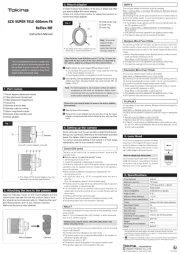
1 April 2025

1 April 2025

1 April 2025

1 April 2025

1 April 2025

25 Januari 2024

24 Januari 2024

24 Januari 2024

24 Januari 2024
Handleiding Lens
- TTArtisan
- Voigtlaender
- Optoma
- Pelco
- Fujinon
- Sony
- Thypoch
- Laowa
- Tamron
- Freelensing
- Yongnuo
- ECS
- Marshall
- ARRI
- Carl Zeiss
Nieuwste handleidingen voor Lens
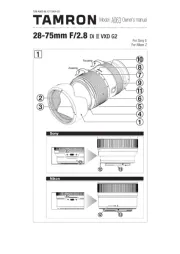
5 Augustus 2025
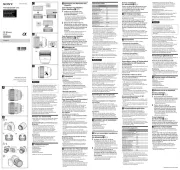
4 Augustus 2025
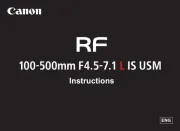
4 Augustus 2025
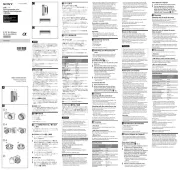
29 Juli 2025
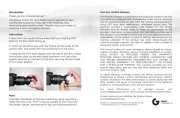
29 Juli 2025
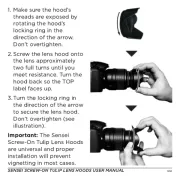
29 Juli 2025

29 Juli 2025

29 Juli 2025

29 Juli 2025

29 Juli 2025